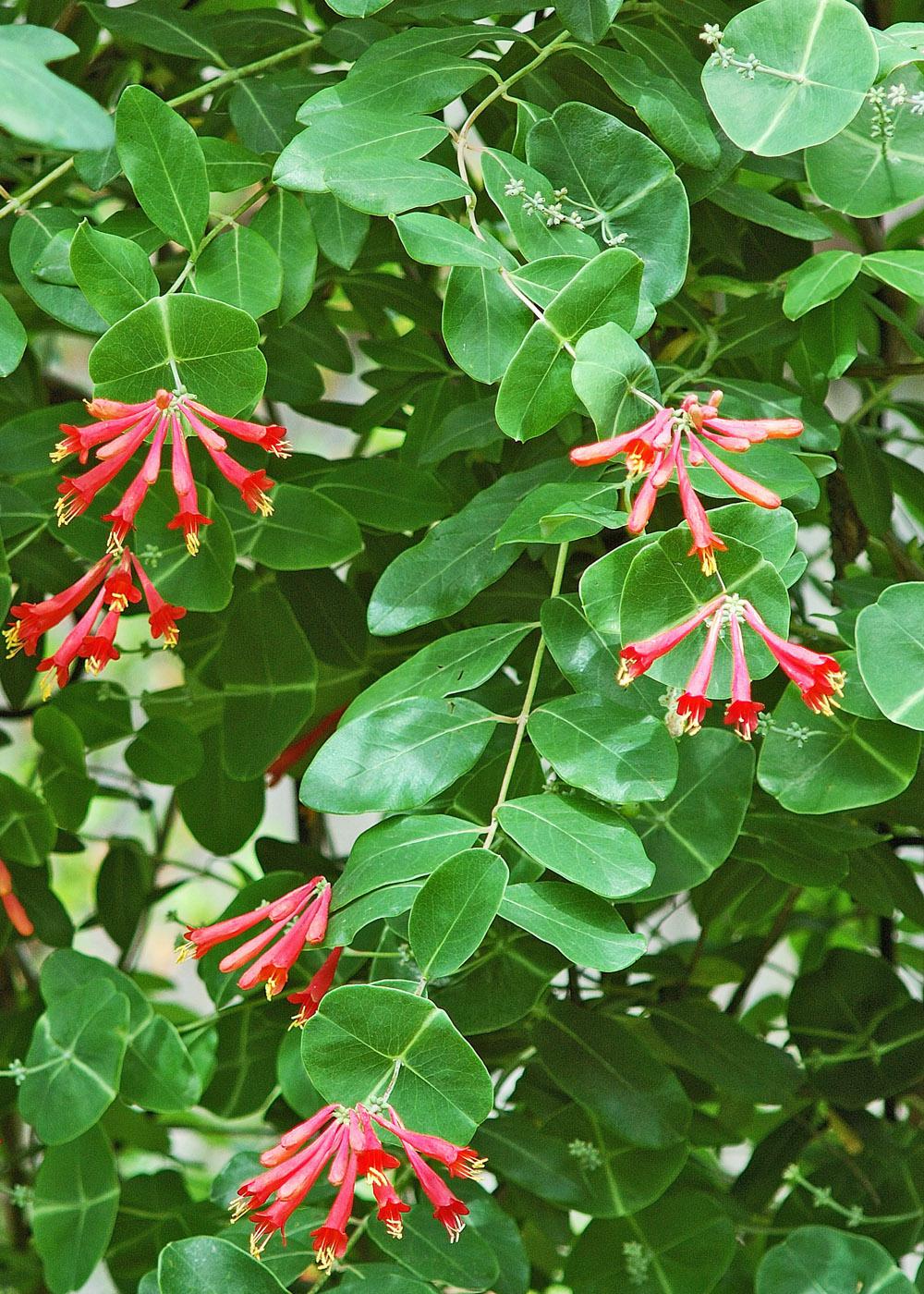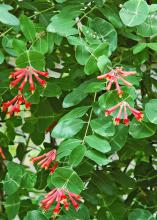Information Possibly Outdated
The information presented on this page was originally released on April 23, 2009. It may not be outdated, but please search our site for more current information. If you plan to quote or reference this information in a publication, please check with the Extension specialist or author before proceeding.
Coral honeysuckle is garden, wildlife champ
By Norman Winter
MSU Horticulturist
Central Mississippi Research & Extension Center
If you are one of many gardeners wondering what native plants to put on your arbors or trellises, consider honeysuckle.
Mention the word honeysuckle, and many people get as irritated as they do when imagining bamboo or kudzu in their gardens. Of course, most are thinking of the Japanese honeysuckle, Lonicera japonica.
Japanese honeysuckle is a plant scourge, able to leap small buildings and swallow cars whole. Well, would you at least believe that it can spread up to 150 feet?
Don’t get red-faced in frustration, thinking of how you’ve seen honeysuckle invade a landscape, but do think about red. The coral honeysuckle also called trumpet honeysuckle, Lonicera sempervirens, is native throughout most of the United States and is even found in Canada. It is sold at nurseries yet has now crept up on some endangered lists.
This is the well-behaved honeysuckle that offers so much for the landscape and backyard wildlife habitat. Now, it can climb, but it usually grows no higher than 20 feet tall. That’s a good height for an arbor or trellis. Going vertical adds so much to a garden, and the spread can make an impact without being the least bit rampant.
The trumpet-shaped blossoms of the coral honeysuckle are a real treat for ruby-throated hummingbirds as well as butterflies. The flowers produce fruit relished by birds like the cardinal and purple finch.
Coral honeysuckle can tolerate full sun but performs well in areas of afternoon shade. It also tolerates a wide variety of soils. Spring is a great planting season. Choose your site, your support structure, and dig the hole as if you were planting a holly or some other shrub. It is best if you loosen tight, heavy clay by working in 3 to 4 inches of organic matter.
Dig the hole about twice as wide as the rootball and about as deep as the plant is growing in the container. In other words, the top of the rootball should be even with the soil surface. After planting, apply a good layer of mulch. Allow about 36 inches between plants.
In a typical garden, good companion plants include coreopsis, shasta daisies or Victoria Blue salvia. For a lush, tropical feel, cluster bananas nearby and perhaps a clump of cannas or Louisiana iris.
Typically the native coral honeysuckle is a fiery red to orange with yellow on the inside. But there are named selections that you might get lucky enough to find. There is Alabama Scarlet (scarlet), John Clayton (yellow), Superba (red-coral) and Dreer’s Everlasting (bright scarlet).
As you might expect from an environmentally friendly native, the coral honeysuckle’s needs are minimal. Don’t overfeed and do a little pruning after blooming, and you will have the proverbial green thumb.



